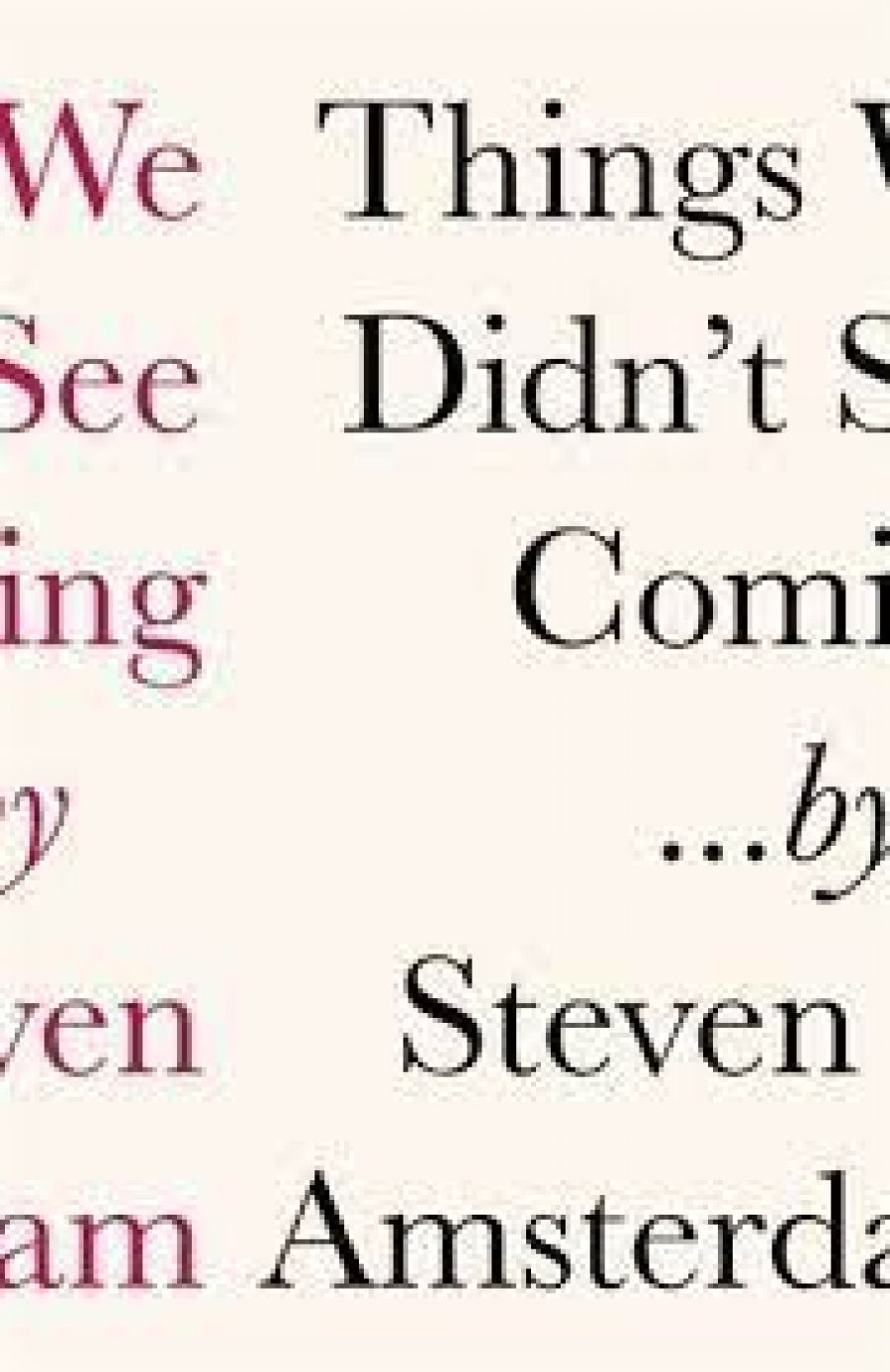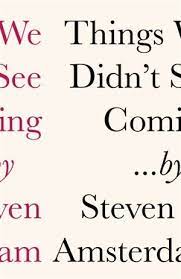
- Free Article: No
- Contents Category: Fiction
- Review Article: Yes
- Online Only: No
- Custom Highlight Text:
Since its establishment in 2003, Sleepers Publishing has made quite a name for itself. Coordinating literary salons and the annual publication of the Sleepers Almanac, which garners contributions from some of the country’s most esteemed practitioners, the small press is now branching out into the domain of full-length fiction, with Steven Amsterdam’s Things We Didn’t See Coming as the opener.
- Book 1 Title: Things We Didn’t See Coming
- Book 1 Biblio: Sleepers Publishing, $24.95 pb, 180 pp
- Book 1 Cover Small (400 x 600):

- Book 1 Cover (800 x 1200):

And what an intriguing and impressive first novel it is. (I call it a novel, though it consists of nine interlinked stories, comparable to Douglas Coupland’s Life After God, 1994, and, to an extent, Victor Kelleher’s Parkland Series, 1994–96.) Amsterdam takes the well-worn premise of the post-millennial apocalypse and reworks it, creating a dystopia of catastrophic climate change, drug addiction, viral epidemics, alternative relationships and bureaucratic wrangling. It is a familiar world.
The stories vary in quality, but only two miss the mark (‘The Theft That Got Me Here’ and ‘The Forest From the Trees’). ‘What We Now Know’ is a strong introduction, narrated by an astute and peculiar boy, reminiscent of M.J. Hyland’s John Egan, who will grow into the older narrator of subsequent stories. ‘Dry Land’ is the standout: Amsterdam depicts a wet, gloomy atmosphere in the bush, where a derelict house is inhabited by a macabre mother and daughter, bleak relics from a forgotten time. ‘Cakewalk’, similarly exceptional, deals with the infection and nebulous illness, abjectly described: ‘He’s on all fours, throwing up blood under the tree. Such a pastoral scene, I’d like to paint it – the pale late afternoon sky, the dried green of the trees, the little man bent over like a dog ...’
The novel’s strength lies in the gaps between and within the stories; the weighty silences and teasing untolds. For some readers this may frustrate. But Things We Didn’t See Coming is the perfect combination of uncanny landscapes, existential anxiety and social critique.


Comments powered by CComment